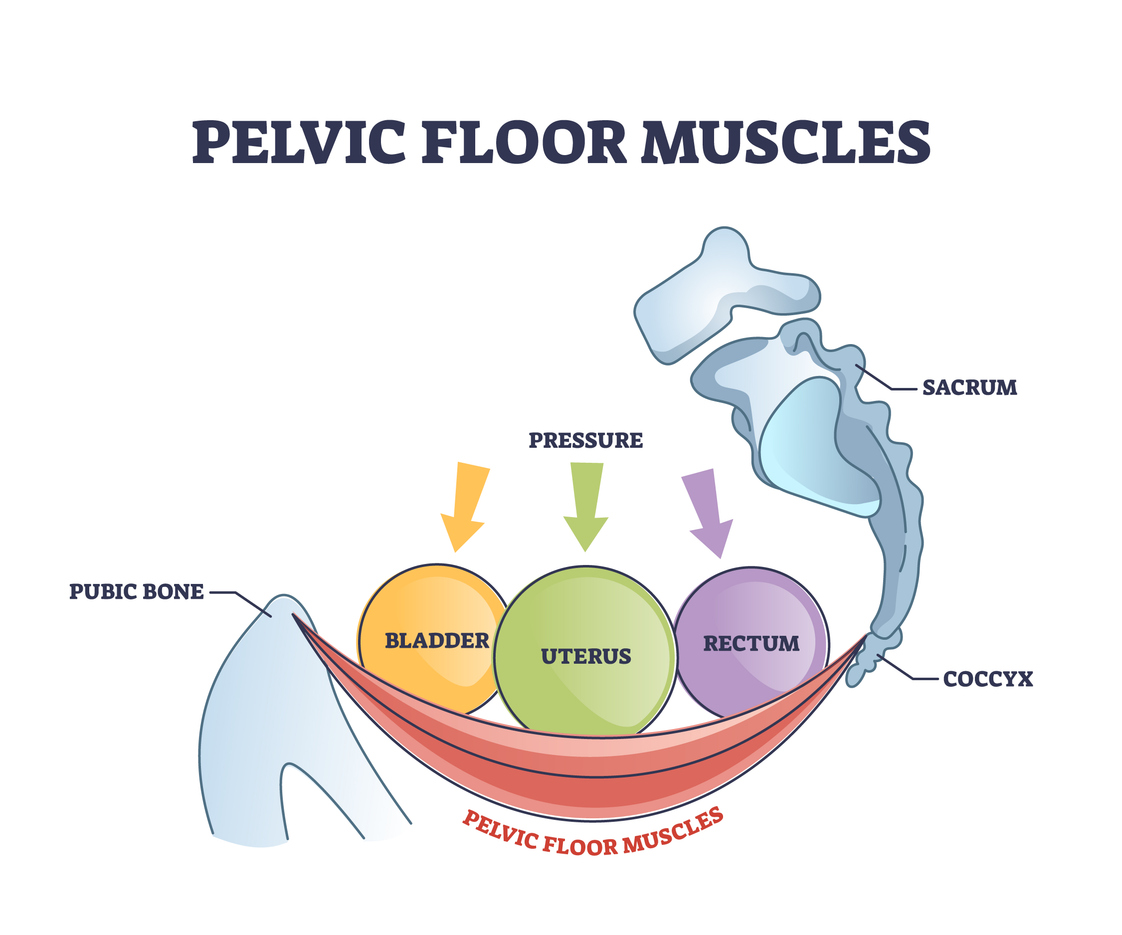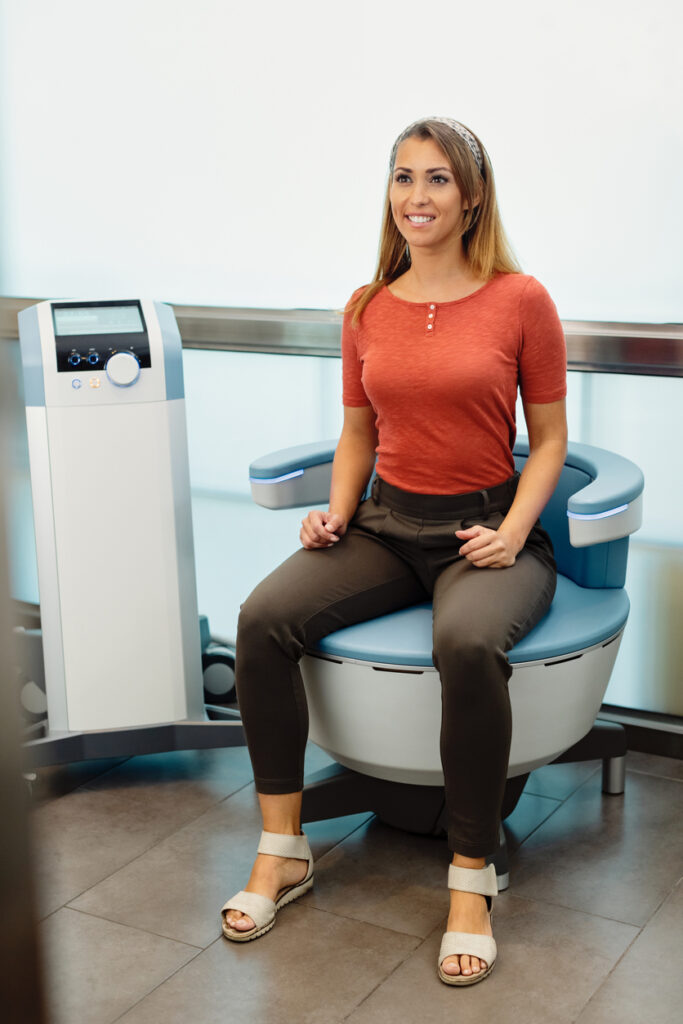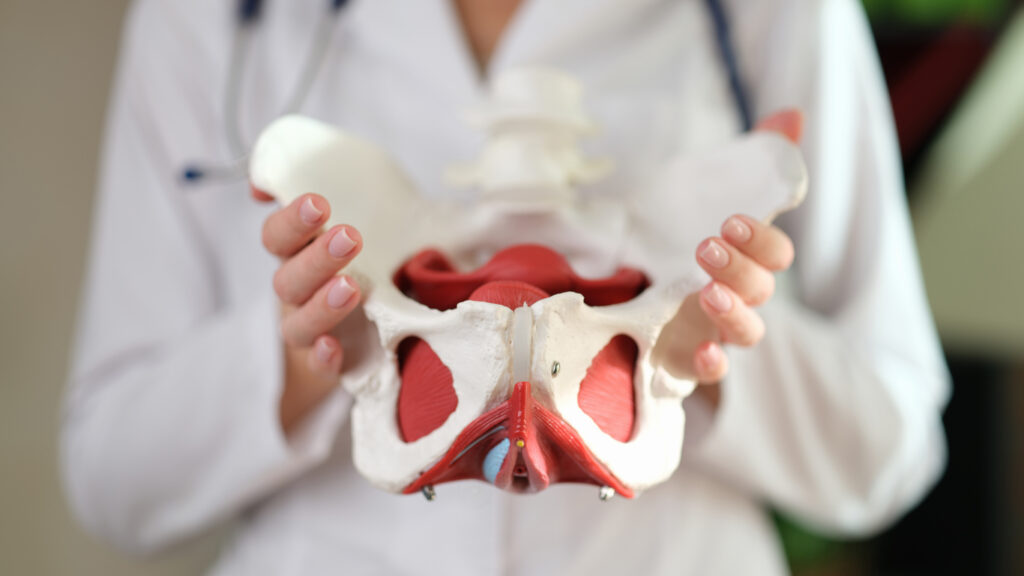

Additionally, EMS Muscle Stimulation therapy can assist postpartum women in restoring separated rectus abdominis muscles.
The device used in this therapy is safe, non-invasive, and painless, with no exposure to radiation or side effects, and it does not require anesthesia. Most patients experience little to no discomfort during the treatment, and there is no recovery period needed afterward.
Strengthens pelvic floor muscles to improve defecation control.
Reduces the risk of bladder, uterus, or rectal prolapse caused by weakened pelvic floor muscles.
Minimizes urinary leakage during activities such as coughing, sneezing, or exercise.
Stimulates and fortifies pelvic floor muscle tissue, restoring tightness and enhancing elasticity.
Increases blood flow and nerve function within the pelvic area.
Strengthens the pubococcygeus (PC) muscle, leading to better sensitivity and enhanced sexual performance.

Individuals with pelvic floor dysfunction may struggle to control the muscles in their pelvic floor, which can result in challenges such as difficulty during bowel movements, urinary issues, lower back pain, and various other concerns.
Common signs that may suggest a pelvic floor problem include:


Pelvic floor issues arise when the muscles are either stretched, weakened, or overly tight. Some individuals may have weak pelvic floor muscles from a young age, while others may experience problems following events like pregnancy, childbirth, or menopause.
Factors affecting pelvic floor muscle fitness include:
Weak pelvic floor muscles can lead to urinary incontinence, problems with the prostate in men, and issues like vaginal or uterine prolapse in women.
Each session lasts 30 minutes, typically with 2-3 sessions weekly for a total of 6-8 sessions, depending on individual needs.
Most people notice improvements after 1-2 sessions, with ongoing benefits seen in the following weeks. Completing the full course of treatment is recommended for stable results.
About 75% of patients maintain improvements after six months, but ongoing exercise is needed to prevent weakness.
The treatment is comfortable and painless, lasting 30 minutes. Patients may feel a slight bounce or shock in the pelvic area, along with muscle contractions.
The treatment uses electromagnetic technology but does not emit harmful radiation. Everyday appliances also emit electromagnetic radiation without causing damage.
After treatment, most people can resume normal activities. A few may experience mild soreness, which typically resolves within 1-2 days.
Consult your doctor, but it is usually recommended to wait 6 months post-delivery before starting treatment.
It’s safer to remove the IUD before treatment due to potential heating and displacement from muscle contractions.
Clinical guidelines suggest two sessions per week over a total of six sessions, ideally completed within three weeks for optimal results.

